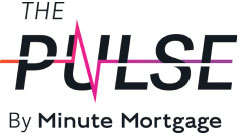Three Steps to Getting Pre-Approved for a Mortgage
Getting pre-approved is one of the first and most important steps in the mortgage process. With a pre-approval letter in hand, you and your real estate agent have a better idea of how much home you can afford and can start narrowing down your list of potential new homes.
What does a lender look at during pre-approval? Read below about the top three criteria that will determine your pre-approval odds when buying a home!
Assets
For mortgage purposes, assets that may be readily accessible such as checking, savings, or money market accounts, or those that can be liquidated with documentation such as CDs, stocks and bonds, and even retirement accounts can be used for consideration in your application.
Lenders look at these items as a form of potential cash flow when sold or cashed out, and consider them when reviewing your overall financial portfolio. Having reserves after closing, especially six months or more, creates a stronger sense of stability in case of an adverse financial setback. In some cases, having several months of reserves may allow you to obtain a higher loan to value.
Debt to Income (DTI)
Your debt-to-income ratio (DTI) compares how much you owe between your housing expense and your other monthly liabilities to how much you make.
An ideal DTI is about 36%; you may be able to get approved if you have a higher percentage, but the lower your ratio, the more favorable your terms.
Generally, monthly payments like student loans, credit card balances, child support, and car payments or leases are considered debts that will be included in your ratio. Some things that are not typically included are utility payments or cell phone bills.
Credit Report
Your credit report, represented by your three-digit credit score, is one of the most essential factors in determining your pre-approval. Your credit report gives a general breakdown of how you handle credit and tells lenders how likely you are to pay your loan back in full.
Your credit report shows your on-time payment history, credit utilization, and open accounts, among other things. You can get a free credit report once a year from each of the three credit bureaus so you can keep track of your credit history and dispute any incorrect information. Please note that your free credit report will not indicate your credit score.
Different lenders and loan products have their own minimum credit requirements, but generally, conventional lenders require a minimum credit score of 620, while FHA loans (as of this writing) require a minimum of 580. The higher your score, the more favorable your terms will likely be.
Conclusion
The pre-approval process is one of the first steps you’ll take toward getting the home of your dreams. Knowing the three main factors involved in the process, and making sure that your finances are in the right order, will help you get into your dream home faster and smarter than ever before!
Ready to get pre-approved? Find the Apply button right here on our site, or Contact one of our experienced and friendly loan officers today to get started.


 4:00 read
4:00 read



